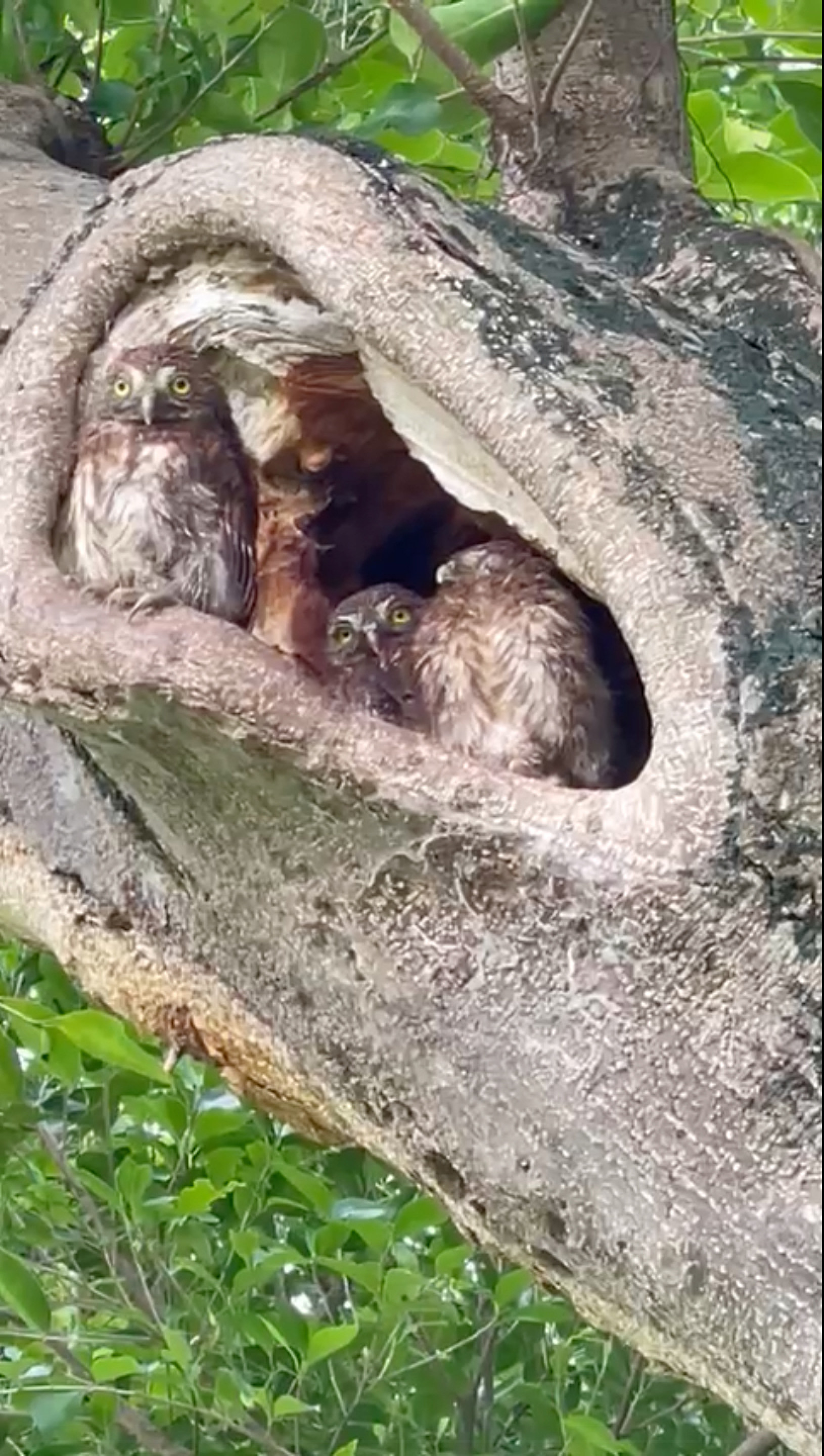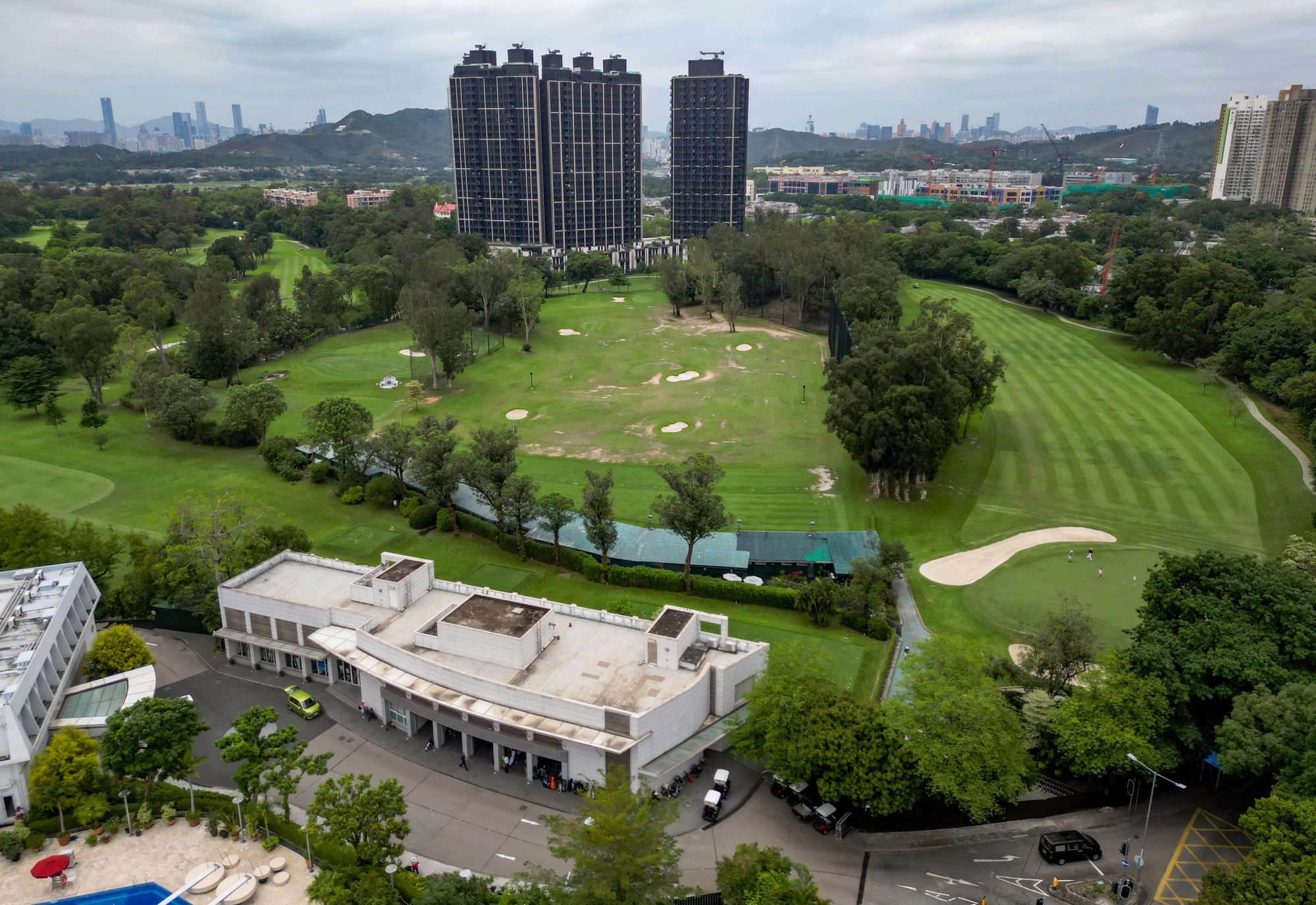
Hong Kong Golf Club shares video of baby owls at Fanling course, says site is important breeding ground for birds in attempt to halt public housing plan
- Clip shows five baby owls about three weeks old nesting inside hole of branch and sitting at foot of old tree
- Hong Kong Bird Watching Society says Asian barred owlets have been recorded in city throughout the year
The Hong Kong Golf Club has shared a video showing five baby owls in a tree on the city’s oldest golf course, saying the area is an important breeding ground for the birds, in another attempt to halt a government plan to build public housing on the site.
In the video released on Monday, the baby owls estimated to be about three weeks old can be seen nesting inside a hole in a branch and sitting at the foot of a tree on the Old Course.
The clip was shared with the Post a few days after the city’s environmental authorities approved a public housing plan for part of the Fanling golf course on Thursday.

Paul Leader, an ornithologist and a consultant who carried out ecological surveys for the club at the golf course, said it was “an important breeding location” for the Asian barred owlet, shown in the video, and the collared scops owl. He added that any building would “undoubtedly damage their habitat”.
Meanwhile, the Civil Engineering and Development Department’s environmental impact assessment report on the course said only the collared scops owl and the Ryukyu scops-owl had been recorded in the area.
The Post has contacted the department for comment.
Building on Hong Kong’s oldest course will hurt future of golf: sports body
According to the Hong Kong Bird Watching Society’s annual report, the Asian barred owlet has been recorded throughout the year, mainly in the northern and central New Territories and Kowloon.
“Both species are widespread in Hong Kong, but need good, old trees for nesting as they use tree holes,” said Gary Ades, head of the fauna conservation department at Kadoorie Farm and Botanic Garden.
“All bird nesting sites are protected under the Wild Animals Protection Ordinance.”
Tournament will not disrupt housing plans for Hong Kong golf course: officials
When asked if the owls would be able to find new homes if the housing project went ahead, Ades said: “I’m not sure as I’m not too familiar with the nearby habitats. The availability of suitable breeding sites will be a key constraint on the health of local owl populations.”
Leader said the site had become a very important area for nocturnal mammals, as the course was empty at night and the fairway offered suitable hunting grounds.
He also appealed to the public not to help any juvenile owls that had fallen from their nests, as the birds’ parents would assist them in such cases.

Tony Tse Wai-Chuen, chairman of the legislature’s development panel, said: “I’m not sure why this information is being disclosed [by the club] now, but as I pointed out for quite some time, the club should highlight why the government should not use the area for housing more for environmental reasons, rather than the importance of a world-class golf course.”
Despite the green light given by the environmental authority last week, the Advisory Council on the Environment has raised concerns over discrepancies between the findings of additional surveys on the development plans carried out by the government and the Hong Kong Golf Club.
Advisory panel backs public housing development on Hong Kong’s oldest golf course
The club accused the government of producing a “substandard” environment impact assessment report, but the authorities countered their surveys’ methodology was scientific.
The authorities in the end gave approval with a condition that development-related departments devise a layout that preserves woodland of 0.39 hectares (0.96 acres) and provide a detailed landscape and visual plan that minimises the project’s impact.

